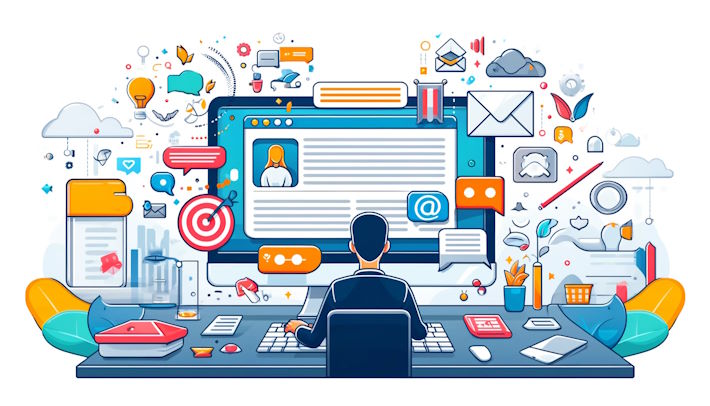Email marketing remains a still a powerhouse, offering an impressive return on investment ( a whole 4200% ) and a direct line to your audience’s inbox.
But with millions of emails sent daily, how can you ensure that yours stand out and actually get read? The key lies in maximizing engagement and conversions, turning casual readers into loyal customers.

Email marketing, when done right, can be extraordinarily effective. To give you an idea, studies show that for every dollar spent on email marketing, businesses can see an average return of $42 .
That’s a testament to the potential that a well-crafted email campaign holds. However, achieving such results isn’t just about sending out emails randomly; it requires a strategic approach tailored to understanding and interacting with your audience effectively.
In this blog post i show you the best practices of email marketing that align with current trends and consumer behaviors.
We’ll dive into the importance of knowing your audience deeply, from gathering essential data to segmenting your list for targeted messaging. We’ll also cover how to craft content that captivates—from eye-catching subject lines to compelling calls to action that prompt clicks and conversions.
Whether you’re a seasoned marketer looking to refine your strategy or a newcomer eager to make your mark, the upcoming sections will equip you with the tools and insights needed to elevate your email campaigns.
1. Understanding Your Audience
1.1: Gathering and Utilizing Subscriber Data
Understanding your audience starts with gathering and effectively using subscriber data. This foundational step allows you to tailor your content, offers, and communication strategies to meet the specific needs and preferences of your audience. Here’s how to do it right:
How to Collect Data Effectively
-
Surveys and Feedback Forms: One of the most straightforward methods for collecting data is through surveys and feedback forms. These can be embedded in your website, emails, or even through social media platforms. Make sure to ask specific, meaningful questions that are directly relevant to your service or product.
-
Website Analytics Tools: Tools like Google Analytics can provide a wealth of information about your subscribers. From demographic data to user behavior on your site, these tools help you understand who your audience is and how they interact with your content.
-
Subscription Sign-Up Forms: When users sign up for your newsletters* or accounts, use the registration process to gather essential data. Limit the number of fields to avoid abandonment, but include critical ones like age, location, or interests.
-
Social Media Analytics: Platforms like Facebook, Instagram, and Twitter offer insights into your followers’ demographics and behaviors. These insights are invaluable for crafting targeted marketing strategies.
Tools and Techniques for Analyzing Email Marketing Subscriber Behavior
-
Data Management Platforms (DMPs): These platforms collect, organize, and analyze large sets of data from various sources, making it easier to understand broad patterns and individual behaviors.
-
Customer Relationship Management (CRM) Systems: CRMs help track interactions with current and potential customers, manage relationships, and automate sales and marketing processes based on the data collected.
-
A/B Testing: Regularly testing different versions of your website or emails with varied segments of your audience can reveal what strategies work best for engaging users.
Subsection 1.2: Segmenting Your Audience
Segmentation involves dividing your audience into smaller, more manageable groups based on specific criteria. This allows for more targeted and effective marketing efforts.
The Benefits of Segmentation
- Increased Relevance: Tailored messages resonate more with audiences, leading to higher engagement rates.
- Improved Customer Retention: Personalized interactions foster a stronger connection and loyalty to your brand.
- Enhanced Efficiency: By focusing on specific segments, you can allocate resources more effectively and achieve a better ROI.
Examples of Segmentation Criteria
-
Age: Tailoring content and marketing messages to different age groups can significantly impact the effectiveness of your campaigns.
-
Location: Geographic information allows for location-specific offerings, which can be crucial for local events or regional product launches.
-
Past Purchases: Analyzing past purchases helps predict future buying behaviors and preferences, allowing for personalized recommendations.
-
Engagement Level: Segmenting users based on their engagement level (e.g., frequent visitors vs. occasional browsers) can help in crafting strategies to convert low-engagement users into loyal customers.
-
Device Usage: Understanding whether your audience prefers desktop, mobile, or tablets can guide your design and optimization strategies for different platforms.
By focusing on these fundamentals of data collection and segmentation, businesses can better understand their audience, leading to more effective marketing strategies and improved customer satisfaction.
